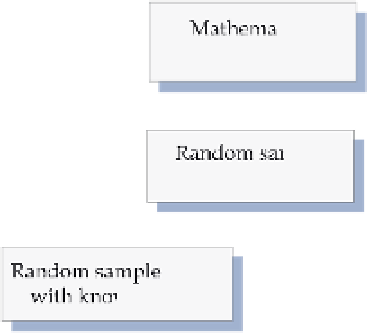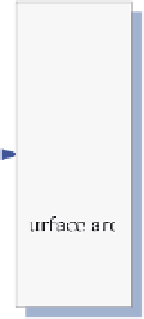Geoscience Reference
In-Depth Information
Fig. 1. Flowchart of the scheme to analyze and evaluate the spatial interpolation models
y
x
20
Surface1
:
\
fxy
(,) 30 sin(
) cos(
)
\ (50
y
x
150;0
y
100)
(2)
60
100
100
x
xy
Surface2
:
\
fxy
(
,
)
(sin(
)
sin(
))
10
100
\ ( 100
x
0;10
y
110)
(3)
y
800
1
2
2
2
2
2
xy
( )
3
5
xy
Surface3
:
\
fxy
(,) 3(1
x e
)
10(0.2
x x
y e
)
22
( )
x
y
3
e
( 50
x
50;
50
y
50)
(4)
Then the three selected surfaces are separately scattered into discrete points, from which one
thousand points were randomly sampled. All of the three simulated mathematical surfaces
are showed in Tab. 2, as well as the distribution of their randomly sample points. After that,
add different errors with the same mean 0 but varying Root Mean Square Errors (RMSE),
which are in turn 0.5, 1, 1.5, 2, 4, 6, 8, 10, to these sample points, making their errors with the
same distribution but different levels of values.










































































Search WWH ::

Custom Search